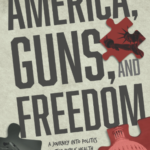Lost Years
Charles Enderlin’s The Lost Years: Radical Islam, Intifada, and Wars in the Middle East 2001-2006 comes as a fresh of breath air in these oft-polluted journalistic times.
Enderlin is a journalist of French and Israeli origins, having lived in Jerusalem since 1968. He has been the Middle East Bureau Chief for the French television chain France 2 since 1990. As of 2005, he has served as vice-president of the Association of Foreign Press Correspondents in Jerusalem. He has written several books covering the Middle East peace process. Among them are Shattered Dreams: The Failure of the Peace Process in the Middle East, 1995-2002 and Peace or War, the Secret of Israeli-Palestinian Negotiations, 1917-1997.
The Lost Years, translated from the original French text by Suzanne Verderber, gives a play-by-play account of the events that unfolded in one of the world’s most tumultuous regions between 2001 and 2006. Enderlin’s gives a no-nonsense, matter-of-fact description of the events, backing them with speeches and statements made by major political players, including Ariel Sharon, Yasser Arafat, and President George W. Bush. Enderlin frequently refers to the 2003 Road Map presented to the Israeli government and to the Palestinian authorities by the quartet and to The Geneva Accord. He provides copies of both in the book’s appendix. Enderlin also includes a chronology of the events discussed and thorough notes on the text to further ensure the accuracy of the data he presents.
Readers of Enderlin’s previous texts have praised him for his consistency in accounting for all sides in question. William B. Quant of the University of Virginia notes: “He has no axe to grind, his story is not filled with heroes and villains, and his account is both informed and credible.” U.S. and international involvement are extensively covered, with insider’s views of UN General Assembly and White House meetings.
Enderlin puts a sharp focus on the region’s ever-escalating violence by making regular references to the number of casualties on either side, in a given month. He says: “in October 2004, four Israelis and 140 Palestinians were killed.” “In February 2005, five Israelis and 12 Palestinians were killed.” At the end of his chronology, Enderlin provides the final tally: Between September 29, 2000 and October 1, 2006, 3,839 Palestinians and 1,070 Israelis were killed. Enderlin is careful to specify the nature of these deaths: of the Palestinian casualties, 1,812 were civilians and 767 were minors. On the Israeli side, 697 were civilians, and 119 were minors. Enderlin cites B’Tselem (The Israeli Information Center for Human Rights) as the source of this data.
While it is not accurate to say that Enderlin does not point at any figures throughout this chronicle, it is important to note that he is uniformly accusatory to all those involved. The Palestinian, Israeli, and U.S. governments are all guilty. The only victims are the innocent civilians, both Israeli and Palestinian, who either lost their lives or who continue to live in constant fear and, (for Palestinians), poverty. The Palestinian’s main error, Enderlin says was the trail of miscalculations which led the Islamist Hamas’ January 2006 victory over Fatah. As Enderlin sees it, the Israelis made a grave error in presenting a unilateral, non-comprising stance (particularly when it came to acknowledging the “occupied” lands) and dubious military doctrines that bred devastating results for both sides. Finally, Enderlin blames the Bush administration, with both its unflinching support for the Israelis and timidity towards Ariel Sharon, for propelling Islamic anti-Western sentiments to exponentially rise.
Enderlin provides interesting tidbits, such as President Bush’s off-the-record mutter to Kofi Annan at a gala dinner: “I will never shake that guy’s (Yasser Arafat’s) hand!” His account of the Israeli settlers’ withdrawal from Gaza is particularly interesting. “Before the cameras, families came out of their homes, hands in the air, wearing the yellow star, evoking the image of Nazi roundups.” Enderlin weaves such poignant images into his text, and in doing so reminds the reader of the day-to-day realities that materialized during these years for civilians on either side, far removed from the formal settings and verbose proclamations in which their leaders took solace.
Enderlin’s epilogue gives a curt assessment of the conditions under which Palestinians live today. Among the statistics he provides are that over 70 percent of Palestinians live below the poverty line, and 22 percent of children under the age of five suffer from malnutrition. He predicts that “this generation will no doubt be oriented towards vengeance.” This supposition is facilitated by Hamas’ full control over the Palestinian Authority, and the marginalization of moderates. Enderlin attributes the current state of affairs to the Israel Defense Forces (IDF)’s doctrine of low-intensity warfare against the Palestinians, saying that “the overall result was negative.”
Enderlin offers his own view in the epilogue and postscripts in several mere sentences. He says that radical Islam (i.e. Hamas) emerged victorious after the events of 2001-2006,
and that this could have been prevented if “there had been a serious peace process. If there had been a halt in Israel’s settlement policy. If there had been an effort by Israel and the international community to confront the problem in Gaza. If…”
Louisa Tavlas is an intern at the American Journalism Center, a training program run by Accuracy in Media and Accuracy in Academia.



